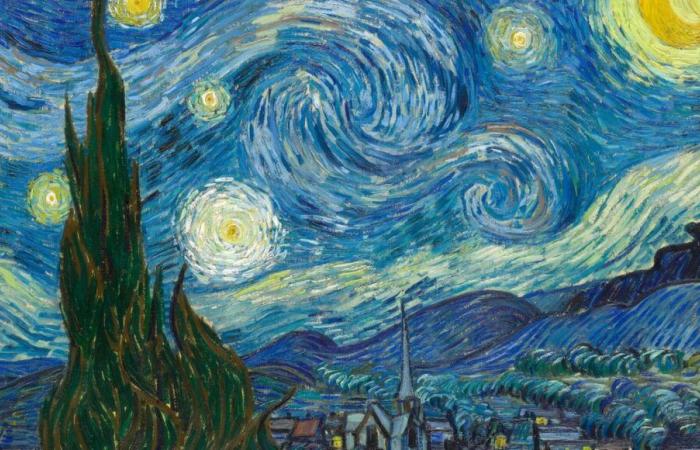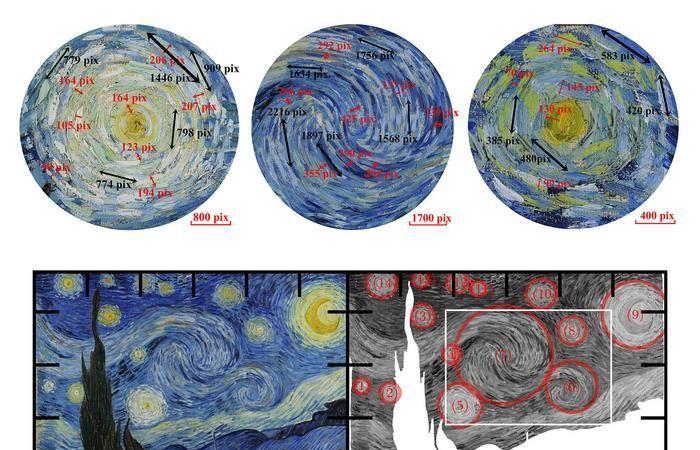Painters of the past sometimes managed to capture complex phenomena that were still unknown in their time. For example, Turner and Monet were influenced by the pollution of the Industrial Revolution in the 19th century, making their landscapes foggy, brighter and less contrasted. Vincent Van Gogh and his painting The Starry Night also attract the interest of researchers, especially because of its swirling sky. Could this painting hide a real physical phenomenon called turbulence?
From artistic whirlwinds to scientific equations
This new study has carried out, for the first time, a complete numerical analysis of the entire atmospheric part of The Starry Night. The results show that the 14 vortices in the sky do indeed follow Kolmogorov’s law, a solution to the fluid mechanics equation, which confirms the presence of hidden turbulence in the artist’s brushstroke. This study opens the way to other similar analyses on the works of Van Gogh and other artists, in order to explore the presence of physical laws in art. How to detect turbulence in works of art? Explanations with Francois SchmittCNRS research director at the oceanology and geosciences laboratory in Lille and co-author of This study appeared yesterday in Physics of Fluids.
The Culture Idea Listen later
Reading listen 4 min
With science Listen later
Reading listen 4 min
Science, QED Listen later
Reading listen 58 min
With science Listen later
Reading listen 4 min







